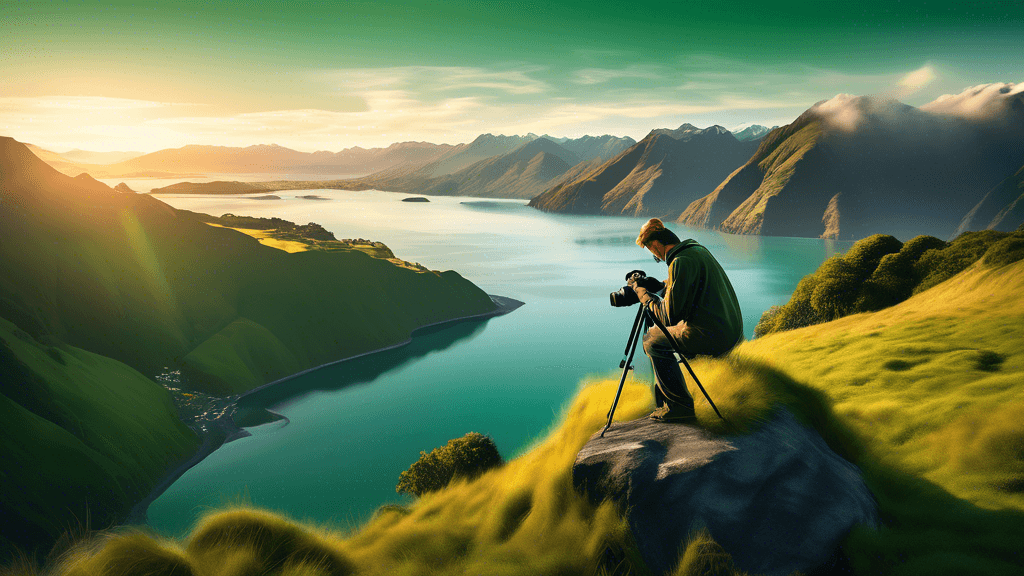
Capturing the Serenity: A Photographer's Guide to New Zealand's Fjords
Share
Exploring the Enigmatic Beauty of New Zealand's Fjords Through Photography
New Zealand, a land of awe-inspiring landscapes, offers a treasure trove of subjects for photographers. Among these, the fjords of New Zealand stand as a testament to nature's artistry, carved by glaciers during the ice ages. The intent of this guide is to help photography enthusiasts capture the untouched beauty of these landscapes, while fostering a deeper appreciation for their environmental significance.
Understanding the Fjordland National Park
Located on the southwestern coast of the South Island, Fjordland National Park is a major part of Te Wahipounamu World Heritage site and includes famous fjords like Milford Sound and Doubtful Sound. Each fjord tells a story of geological processes that span millions of years, and capturing these landscapes requires more than just technical skill; it demands a deep reverence for the natural world.
Milford Sound, described by Rudyard Kipling as the eighth wonder of the world, is particularly renowned for its peaks like Mitre Peak that rise dramatically from the dark waters. Meanwhile, Doubtful Sound provides a more serene experience, with its complex network of inlets set against a backdrop of dense rainforest. Both locations present unique challenges and opportunities for photographers.
Best Times to Visit and Photography Tips
To really capture the essence of New Zealand's fjords, timing and preparation are crucial. Here are some tips tailored to these enchanting locales:
- Best Time of Year: The late spring and early summer months (November to December) offer lush vegetation, blooming flowers, and dynamic weather patterns that can add drama to your photographs.
- Lighting Conditions: Overcast days are frequent and can help create moody, evocative photos with soft, diffused light. However, the occasional bursts of sunshine through the clouds can illuminate the waters and cliffs spectacularly, allowing for vibrant and contrasting imagery.
- Golden Hours: Capturing early morning mist or the late soft glow of sunset provides not only the best light but also a chance to photograph wildlife emerging along the shorelines.
Navigating the Fjords: Practical Advice
Access to many of these fjords is only feasible by boat or aircraft, and many photographers opt for boat cruises or kayak tours to immerse themselves in these environments. Here's how you can maximize your photographic journey:
- Cruise Tours: Opt for smaller boats to navigate closer to waterfalls and cliff faces; these often provide more flexibility for photographers.
- Kayaking: For the more adventurous, kayaking can offer unique angles and access to undisturbed natural areas, ideal for wildlife and landscape photography.
- Aerial Photography: Chartering a helicopter or a small plane can provide a stunning new perspective on the scale and beauty of the fjords, though it requires a higher budget.
Environmental Considerations and Best Practices
As with all nature photography, it is vital to practice ethical photography to ensure that we are conserving the environments we capture for future generations. Here are some guidelines:
- Leave No Trace: Be mindful of natural habitats; stick to marked paths and existing access points to minimize impact.
- Respect Wildlife: Use long lenses to photograph wildlife; never bait, chase, or disturb animals.
- Sustainable Tourism: Support local businesses that practice sustainability, and consider contributing to conservation initiatives.
Notable conservationist, Jane Goodall, once said, Only if we understand, can we care. Only if we care, we will help. Only if we help, we shall be saved. These words resonate profoundly when photographing such pristine environments as New Zealand's fjords.
Conclusion
Photographing New Zealand's fjords offers more than just stunning images; it provides a profound connection to the planet that sustains us. For those who venture to these remote corners of the Earth, the experience is transformative, embedding a deep responsibility to protect and preserve. As you plan your photography journey to New Zealand's fjords, remember the impact that these images can have not just on your portfolio, but on promoting environmental awareness and conservation efforts across the globe.
If you are stirred by the notion of capturing such majestic landscapes and contributing to their preservation, why not start planning your next adventure to New Zealand? The fjords are calling!





